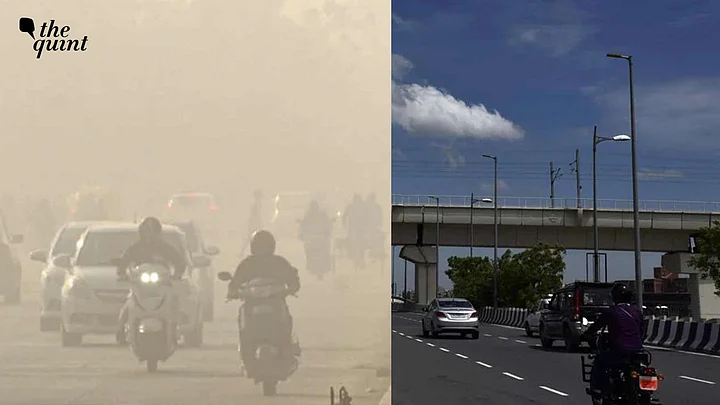The adverse contributions of the transport sector to air pollution and climate change are widely acknowledged. To combat air pollution in India, significant steps have been taken at the central and state levels. Strategies such as transitioning from BS-IV to BS-VI norms for fuel and vehicles, promoting cleaner and alternative fuels like CNG, LPG, and ethanol blending, and implementing the Faster Adoption and Manufacturing of Electric Vehicles (FAME)-2 scheme have been identified as effective approaches. Additionally, there is a push for public transport to reduce pollution.
However, it is equally important to embrace a mission statement of Lifestyle For Environment (LiFE) to ensure the success of these efforts. People's choices regarding transportation modes and vehicles significantly impact the effectiveness of technological advancements and policy interventions. This aligns well with the Avoid-Shift-Implement (ASI) framework, which emphasises creating behavioural shifts through nudges in conjunction with technological interventions.
Introducing buses on the roads is a positive step; however, a bigger challenge lies in encouraging the public to use public transport more frequently.
How Air Pollution Plagues Big Cities
The Ease of Moving Index (EoMI) 2022 study revealed that the user experience varied across the four megacities studied: Delhi, Kolkata, Mumbai, and Bengaluru. Affordability, accessibility, comfort, reliability, and safety were identified as crucial factors influencing the adoption of public transport. Addressing these factors through suitable interventions at various levels is necessary.
It is widely acknowledged that increasing the penetration of public transport is essential to combat air pollution. While the story of Delhi and North India struggling with poor air quality during winters, unfolds every year, it is now apparent that many more cities suffer from air pollution. Data indicates that Kolkata, Mumbai, Bengaluru, and other cities have often experienced higher pollution levels than Delhi throughout the year. Surprisingly, Kolkata's mortality rate per lakh population was more than three times higher than Delhi's, despite Kolkata performing better than Delhi in many EoMI indicators (Table 1).
Such statistics clearly highlight the urgency of transitioning all modes of transportation, particularly public transport, to clean sources of energy. A notable example of a conscious decision in this regard is the emerging policy ecosystem surrounding transportation in Delhi.
The transport sector in Delhi is responsible for 24-28% of particulate matter emissions in Delhi-NCR (National Capital Region) and in their efforts to combat air pollution in the region, the Commission for Air Quality Management in the Delhi NCR Region (CAQM) has been actively advocating for electric mobility and the expansion of the public transport network, including the Intermediate Public Transport (IPT) network. The significance of IPT cannot be overstated, as both Delhi and Kolkata contribute to poor air quality when operating on polluting energy sources (Table 2).
This aligns with the strategy identified under the National Clean Air Programme (NCAP), as the benefits of public transport can only be fully realised when powered by clean energy sources. However, the pursuit of the electric option should be contingent upon prevailing market conditions such as vehicle availability and a substantial increase in charging infrastructure. Additionally, technological alternatives should be explored as transitional solutions wherever possible.
Strategies To Mitigate Effects
Another significant outcome of this study is the necessity to facilitate informed decision-making. Despite the availability of numerous air quality indices, people's choices regarding commuting or selecting transportation modes remain largely unaffected. While Delhi-NCR has implemented a Graded Response Action Plan (GRAP) that automatically imposes restrictions on movement during episodes of severe air pollution, similar measures are notably absent in the City Action Plans of Mumbai, Bengaluru, and Kolkata.
Even if a formal plan may not be deemed necessary, it is crucial to inform the public through advisories linked to air quality and highlight the positive benefits of utilising public transport. These initiatives can be integrated with India's National Air Quality Index (NAQI) and extensively publicised by city and state administrations. Therefore, strategies for Travel Demand Management (TDM) that aim to influence user choices can yield positive impacts. For instance, adopting work from home for Delhi NCR could lead to a 1.9% reduction in PM 2.5 emissions by the entire vehicular fleet in the region. Similarly, application of non-motorised transport in Delhi could enable a 139 ton reduction in PM 2.5 per person per year.
Air pollution requires a multi-faceted strategy where the clean source of energy for transportation and behavioural change initiatives are forces that, when combined, can have synergistic impacts. Such an approach is crucial if we aim to reduce the health burdens that air pollution imposes on our economy every day.
The progress and development of our cities are meaningless without considering the environment (Prakriti) and the well-being of the people (Praja) at their core. Therefore, informed decisions are necessary to facilitate the convergence of these three pillars (the three Ps) for a better, cleaner future for Indian cities.
(Roshan Toshniwal is the Head of the Centre for Future Mobility and Rohit Pathania is the Lead of Energy & Mobility at the OMI Foundation. This is an opinion piece. The views expressed above are the author’s own. The Quint neither endorses nor is responsible for them.)
